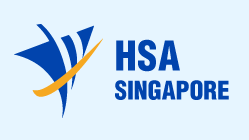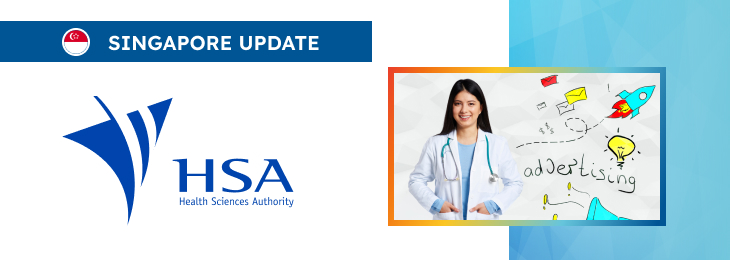The new article describes in detail the key aspects related to the advertising activities in the context of medical devices intended to be marketed in Singapore.

Table of content
The Health Sciences Authority (HSA), a Singapore’s regulatory agency in the sphere of healthcare products, has published a guidance dedicated to advertisement controls of health products and provisions of non-promotional information to the public.
The document provides an overview of the applicable regulatory requirements, as well as additional clarifications and recommendations to be taken into consideration by medical device manufacturers and other parties involved in order to ensure compliance.
It is also important to mention that the authority reserves the right to make changes to the guidance and recommendations provided therein, should such changes be reasonably necessary to reflect corresponding amendments to the underlying legislation.
Definitions and Classification
In accordance with the applicable regulatory requirements, health products are broadly categorized into three main types: Therapeutic Products (TPs), Medical Devices (MDs), and Cell, Tissue, or Gene Therapy Products (CTGTPs). TPs generally include pharmaceutical drugs and vaccines with chemical or biologic substances, used for therapeutic, preventive, palliative, or diagnostic purposes. They are further classified based on the necessity for medical prescription into Prescription-only Medicines (POM), Pharmacy-only Medicines (P), and General Sales List medicines (GSL).
As explained by the authority, MDs encompass a range of instruments, machines, and implants intended for health-related purposes, including disease diagnosis and anatomical support or modification. Certain MDs are designated for professional use only (PUO MDs), indicating they should be operated under the supervision of healthcare professionals.
CTGTPs involve advanced products containing human or viable animal cells, tissues, or recombinant nucleic acids, designed for use in humans under strict medical oversight for similar purposes as TPs.

Advertisement Restrictions
The document further provides an in-depth overview of the applicable restrictions and limitations in the sphere of advertising activity. In particular, it is stated that regulations explicitly prohibit advertising POMs, PUO MDs, and CTGTPs to the general public.
This restriction is based on the premise that the usage of these products should rely on the clinical judgment of medical professionals and necessitates an informed consultation with patients.
The guidelines further extend this prohibition to unregistered TPs that are imported and supplied under Special Access Routes (SAR) or compounded for patient use.
Any communication intended to promote these products is considered an advertisement and is subject to strict prohibition under health product advertisement (HPA) regulations.
Advertisement Requirements for Less Restricted Products
While advertising for POMs, PUO MDs, and CTGTPs is tightly controlled, advertising TPs that are classified as Pharmacy-only Medicines and GSL Medicines, along with non-PUO MDs, is permitted to the general public.
However, these advertisements must strictly adhere to the principles and requirements as outlined by the HPA and respective regulations. Advertisements should accurately reflect the approved uses of these products as registered with the HSA.
It is vitally important to ensure that these advertisements do not promote unapproved uses, claim government endorsement, or use endorsements by healthcare professionals or celebrities.
Providing Non-Promotional Information to the Public
Educational and factual information about diseases and treatment options can be published, provided it is non-promotional and substantiated according to prevailing medical guidelines. Such information should offer a balanced overview of all treatment options without promoting specific health products.
Content considered promotional, such as mentioning health products by brand or using laudatory terms, transforms the material into an advertisement and subjects it to advertisement controls.
Conclusion
In summary, the present HSA guidance provides important clarifications regarding the approach to be followed when it comes to advertising healthcare products intended to be marketed and used in Singapore as set forth under the existing legal framework. The document highlights the key aspects to be taken into consideration with respect to the scope of information to be communicated to the public, and also the way it should be communicated to avoid ambiguity and confusion.
How Can RegDesk Help?
RegDesk is a holistic Regulatory Information Management System that provides medical device and pharma companies with regulatory intelligence for over 120 markets worldwide. It can help you prepare and publish global applications, manage standards, run change assessments, and obtain real-time alerts on regulatory changes through a centralized platform. Our clients also have access to our network of over 4000 compliance experts worldwide to obtain verification on critical questions. Global expansion has never been this simple.

